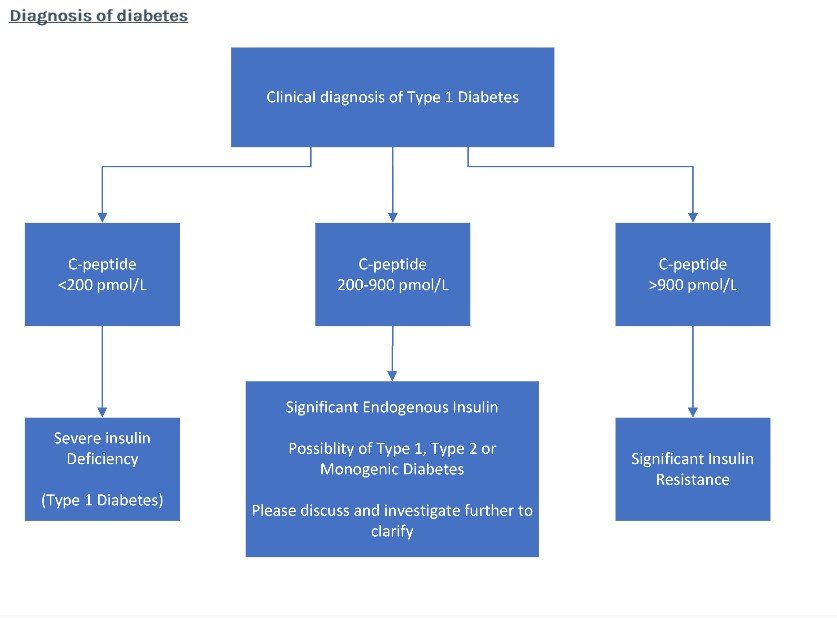Suitable Specimen Types
- EDTA Plasma
Specimen Transport
Transport sample to the lab as usual.Sample Processing in Laboratory
Sample should be spun within 24hrs. Plasma should be stored frozenSample Preparation
Blood needs to be collected into EDTA tubesTurnaround Time
7 daysSample Stability
Stable at RT for 24 hours unspun, 7 days spun. Store at -20CC-Peptide
General Information
Analysis of urinary c-peptide is also available, for specimen requirements see c-peptide (urine).
Determination of the C-peptide is an additional option to monitor average β-cell insulin secretion. C-peptide is used as a test of β-cell function in a variety of conditions including type 1 diabetes, and to aid in the differential diagnosis of hypoglycemia, and surreptitious insulin self-administration. A low C-peptide level is expected if the insulin secretion is diminished as in insulin-dependent diabetes (type 1 diabetes, latent autoimmune diabetes of adults (LADA)). Elevated C-peptide levels may be found when β-cell activity is increased as in hyperinsulinism, insulin resistance (with high blood glucose) and insulinomas (with low blood glucose). Inappropriately raised plasma insulin concentrations in the presence of low or suppressed plasma C-peptide will identify patients with exogenous insulin administration. Suppressed plasma insulin and C-peptide concentrations in the presence of hypoglycaemia can be caused by chronic kidney disease, liver disease, alcohol and drugs.
C-peptide is cleared by the kidneys, therefore impairment in renal function can make C-peptide results difficult to interpret.
Patient Preparation
If using for investigation of hypoglycaemia, patient must be hypoglycaemic at time of sampling (Venous glucose = <3.1 mmol/L).
Notes
Cannot analyse haemolysed samples
Please note specimen type change from 21.02.2022. EDTA plasma is now the required specimen for this test.
Reference Range
 Non- diabetic hypoglycaemia
Non- diabetic hypoglycaemia
See Insulin entry
Specifications
- EQA Status: UK NEQAS Guildford Peptide Hormones
